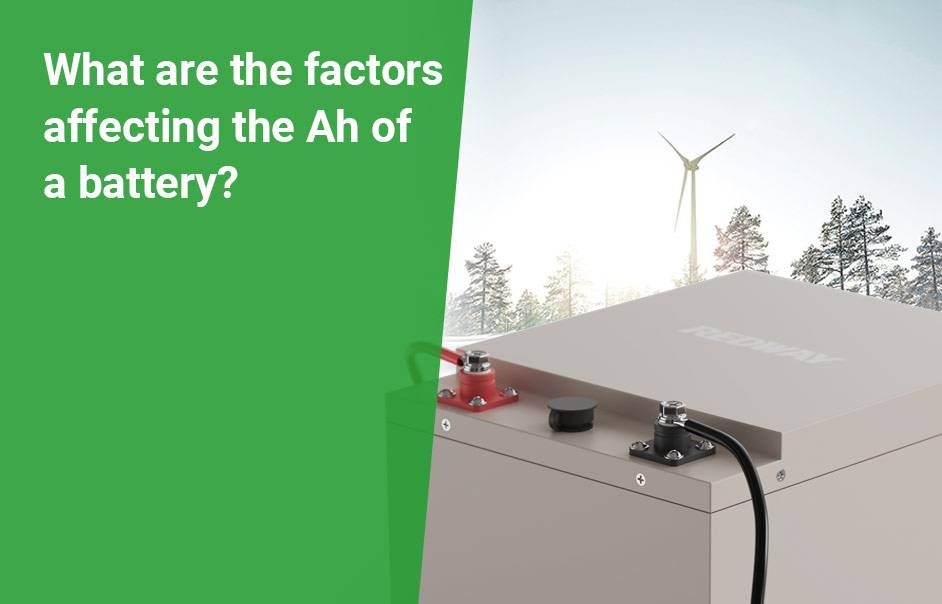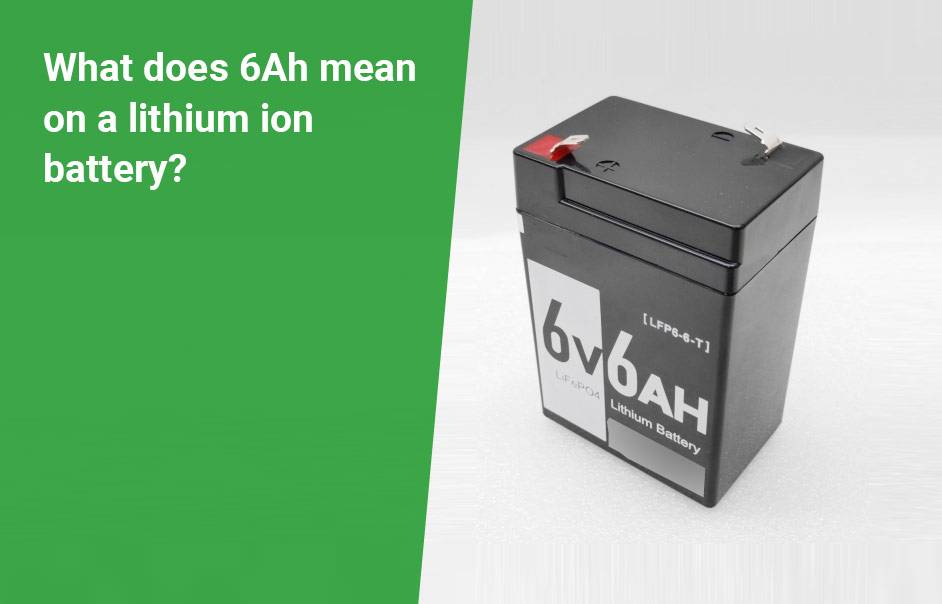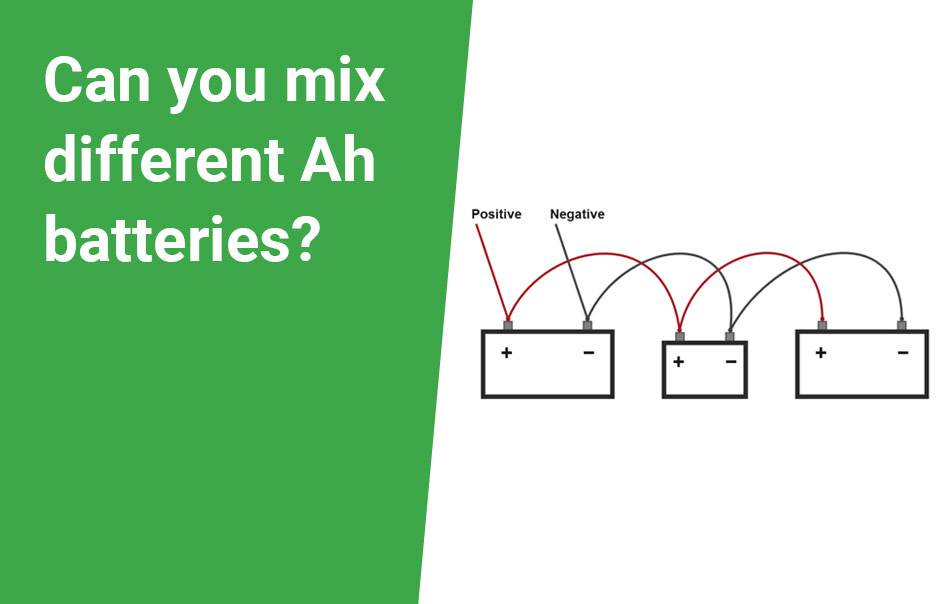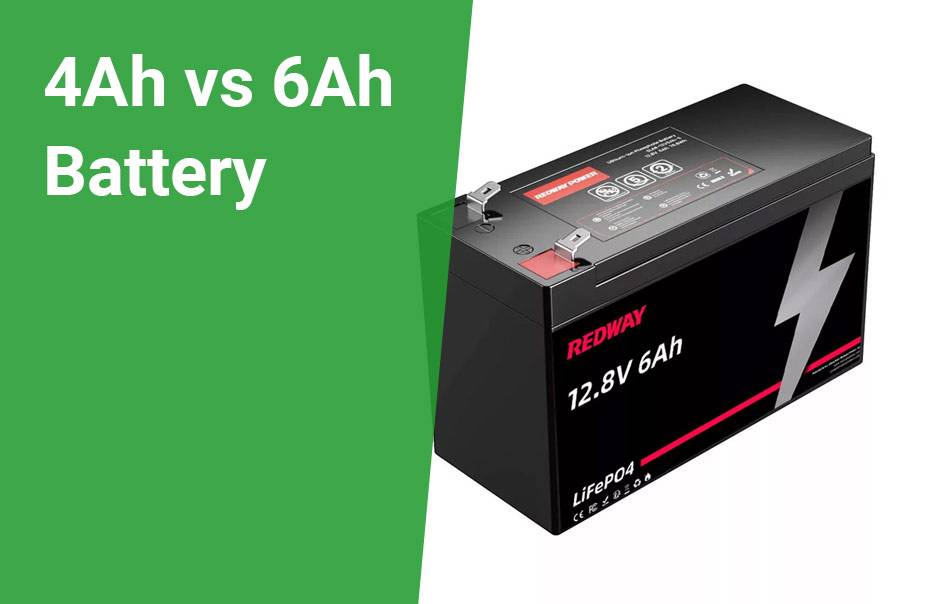In this comparison, we’ll delve into the debate between 4Ah and 6Ah batteries to determine which one offers superior performance. From power output to longevity, we’ll explore the key factors that can influence your decision and help you make an informed choice for your specific requirements.
Understanding Amps and Ah in Battery
Ampere hours, commonly abbreviated as (Ah), signify the quantity of energy stored within a cell, facilitating the passage of 1 amp of current for a complete hour. Essentially, a battery’s capacity is indicated by its rating, typically 1 Ah.
Deep-cycle or rechargeable batteries are frequently evaluated using this measurement unit to determine their capacity. While larger batteries are typically rated in ampere hours, smaller cells found in devices such as laptops are rated in milliampere hours (mAh).
This article delves into some significant aspects concerning the debate between 4Ah and 6Ah batteries, as the question “4Ah vs 6Ah battery” is one commonly posed. What exactly are amps? Amperes measure the flow of current. One ampere of current represents an electrical charge of one coulomb per second.
The total discharge duration and current flow of a battery are combined to create an ampere hour. The depth of discharge (DOD) of batteries is considered a critical factor. It denotes the percentage of the battery’s overall capacity that has been depleted.
What are the factors affecting the Ah of a battery?
Several factors contribute to the Ah of a battery. These factors include some of the following:

- The temperature of the environment where the batteries are stored affects the battery’s Ah.
- The length of wire connecting the electrodes also impacts the battery’s Ah capacity.
- The battery’s cross-sectional area is crucial regarding its Ah capacity.
- Lastly, the potential difference between the battery’s anode and cathode also influences Ah.
How long can a 4Ah battery last?
The duration of a 4.0 Ah battery’s performance depends on several factors, including the battery’s discharge current and discharge time, which is calculated as capacity divided by discharge current (at a constant rate).
For example, a 4Ah battery with a capacity of 4000mAh can last for 20 hours when discharged at a constant current of 200mAh, and it can last for 8 hours when discharged at a constant current of 500mAh.
Moreover, the lifespan of batteries can also be influenced by different battery materials. For instance, lithium batteries of equivalent capacity tend to have a longer lifespan compared to lead-acid batteries.
4Ah vs 2Ah Battery, which is more powerful?
Indeed, a higher amp hour battery boasts greater capacity. Furthermore, they generally outlast smaller Ah batteries for equivalent power consumption. A 4Ah battery offers twice the capacity of a 2Ah battery, rendering it more resilient under identical conditions, providing extended usage time.
Is a higher Ah battery better? Does more amps mean longer battery life?
No, a higher Ah battery isn’t inherently superior. Ah serves as a vital metric for assessing a battery’s operational capacity. A higher Ah battery exhibits a stronger ability to discharge steadily over a given period, thus enduring longer post-charging compared to a lower Ah counterpart.
However, a higher Ah rating simply signifies greater capacity, not necessarily superiority. Evaluating battery performance necessitates a comprehensive consideration of factors such as output power, discharge duration, charging and discharging cycles, and self-discharge rate.
In some instances, more amps can indeed result in a longer battery life due to the increased power storage of a higher amp battery. Nonetheless, it’s important to note that while higher Ah can have a slightly positive impact on battery life, it’s not the sole determinant.
What does 6Ah mean on a lithium ion battery?
6Ah on a lithium battery indicates that the capacity of the lithium battery is 6Ah. A standard 12V 6Ah lithium-ion battery finds utility in various application scenarios, such as electric sprayers and fishing lights, among others.
Should you seek the finest 6Ah lithium battery store, Redway could be your prime selection, as our 6Ah lithium battery boasts a cycle life of over 4000 cycles (0.2C, 25℃, 90%DOD) and beyond.

4Ah vs 6Ah battery, what are the main differences?
The inquiry “4Ah vs 6Ah battery” is one frequently posed. The battery capacity of 6Ah exceeds that of 4Ah by 50%. When subjected to identical discharge conditions, the 6Ah lithium battery offers longer usage time than the 4Ah counterpart.
Battery capacity is contingent upon the quantity of active substances within the battery, with active substance content determined by the material and volume of the battery.
Higher Ah batteries contain more active substances, necessitating a larger volume compared to lower Ah batteries. Consequently, the volume of 6Ah batteries typically surpasses that of 4Ah batteries.
Can you mix different Ah batteries?
The common question often asked is “4ah vs 6ah battery.” Batteries with varying amp-hour capacities should not be interconnected in series. We strongly discourage attempting to combine and mix different battery sizes (amp-hours).
Differences in charging and voltage among batteries can result in damage and affect battery lifespan.

Does battery capacity increase in parallel?
Yes, connecting batteries in parallel increases the battery’s capacity. The voltage remains the same in parallel connection. However, by connecting batteries in parallel, the total current capacity is enhanced, as it equals the sum of the currents of all individual cells. Conversely, connecting batteries in series increases the battery’s voltage while keeping the capacity constant.
What Ah battery do I need?
Determining the suitable ampere hour battery is a complex task.
In addition to the load, numerous other factors must be taken into account, such as battery charge and discharge capacity, duration of load power consumption, actual maximum battery discharge capacity, specific application scenarios, etc. Only by considering these factors comprehensively can a more informed decision be made.
Can I use a 6Ah battery instead of a 4Ah?
The question of whether 4Ah vs 6Ah can substitute for each other is frequently raised. Batteries with differing capacities cannot be combined to form a battery pack.
However, if it’s a single battery with the same nominal voltage, theoretically, it can be used interchangeably. Hence, using 6 Ah batteries in place of 4 Ah is permissible provided they share the same voltage and battery material.
How many amps does a 12-volt battery have?
Typically, 12-volt batteries come in various specifications ranging from 45/60/80/100/120 amps. The operational current of a 12v battery is contingent upon its model, namely its capacity. Higher operational currents correspond to shorter battery durations. For instance, a 20Ah battery can endure for 10 hours when discharged at a current of 2 amps.
What is the best Ah lithium battery?
As a commonly utilized type of lithium-ion battery, the 12V 100Ah lithium battery boasts a wide application range, necessitating comprehensive consideration of numerous factors when selecting the best option.
As a reputable battery retailer, Redway offers numerous authoritative assurances regarding product quality. The Redway 12V 100Ah lithium battery stands out as an optimal choice, providing ample power and energy to electric appliances and outperforming its counterparts.
Equipped with 6 protections from BMS, our 12V 100Ah lithium deep cycle battery ensures enhanced safety and ease of use. The accessible BMS guarantees a prolonged lifespan for the entire battery pack. Despite its robust protection features, our LFP battery weighs only 13 kgs, owing to its higher energy density and compact size.
At 1/3 the weight of a lead-acid battery, it can be effortlessly transported wherever needed. With a continuous current of 100A, it delivers impressive electrical power to a wide array of electric equipment, ensuring reliable operation for at least a decade, if not longer.

